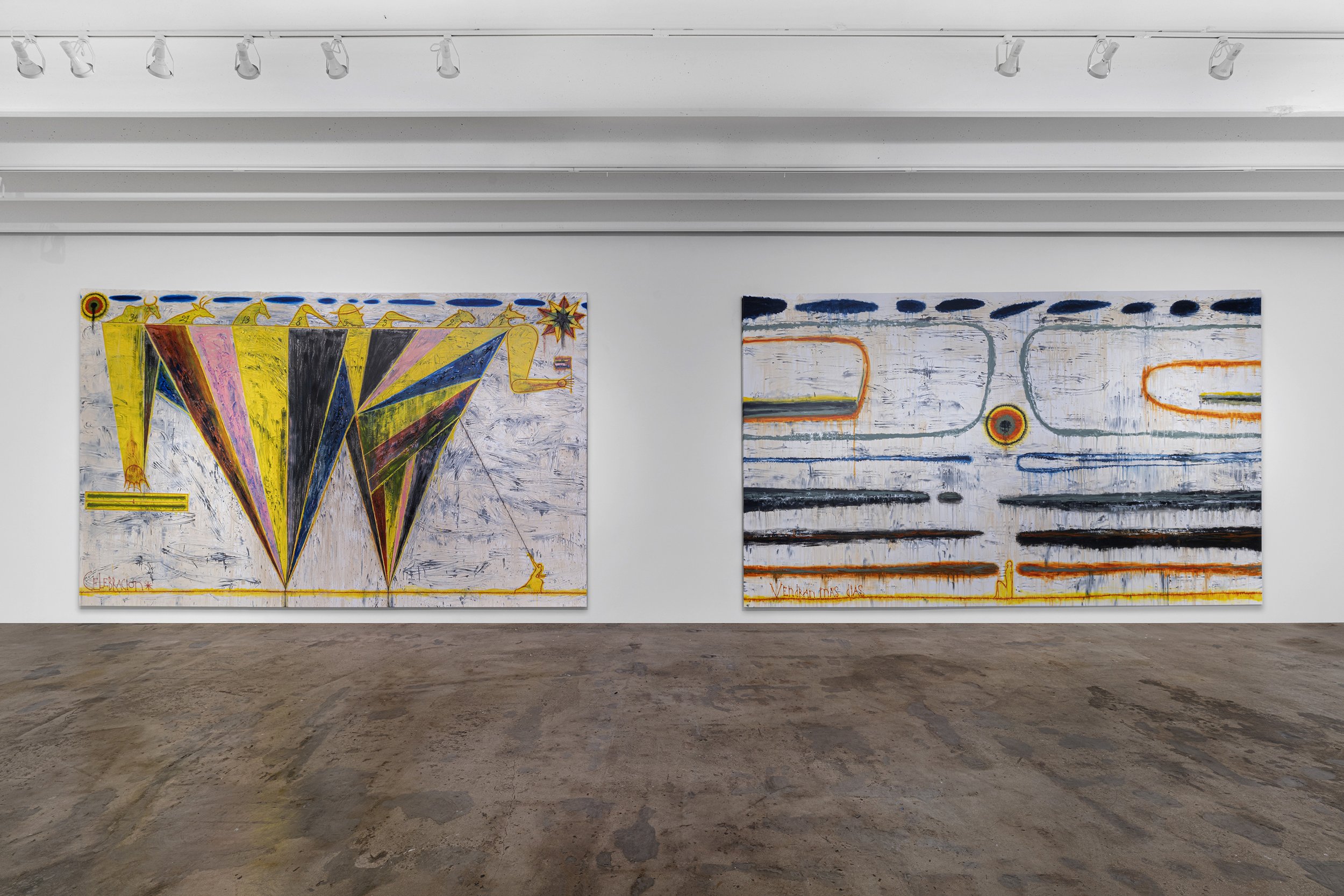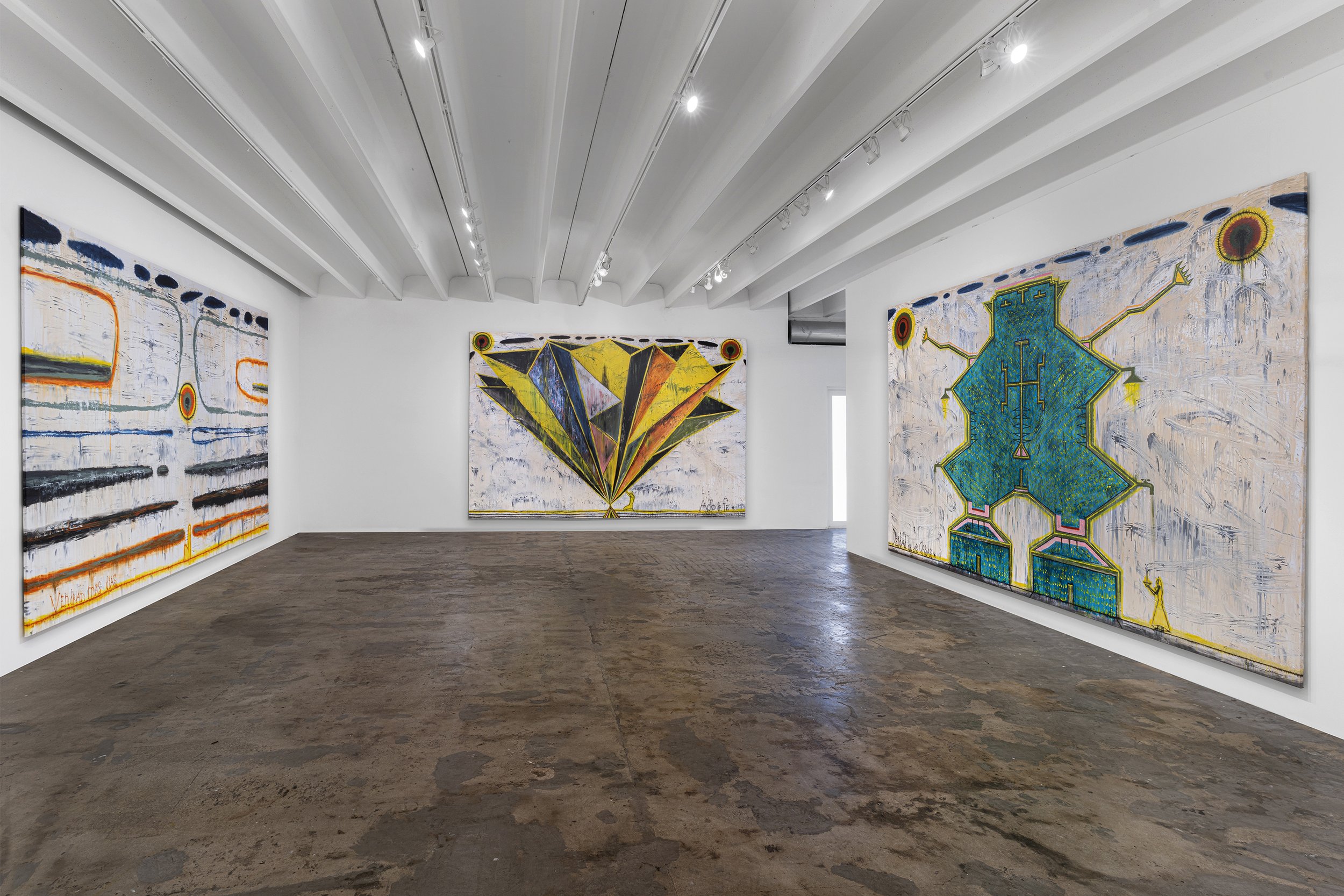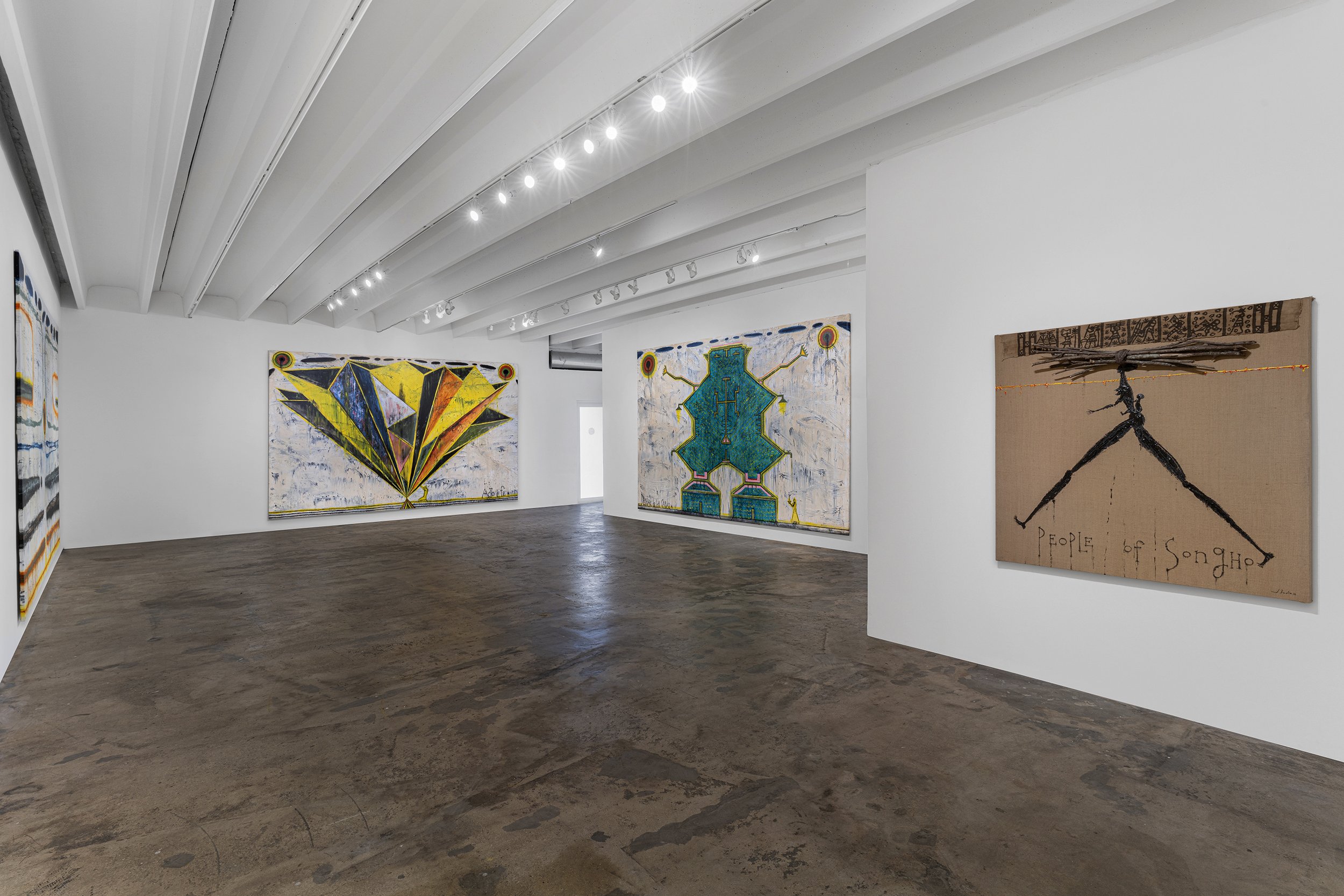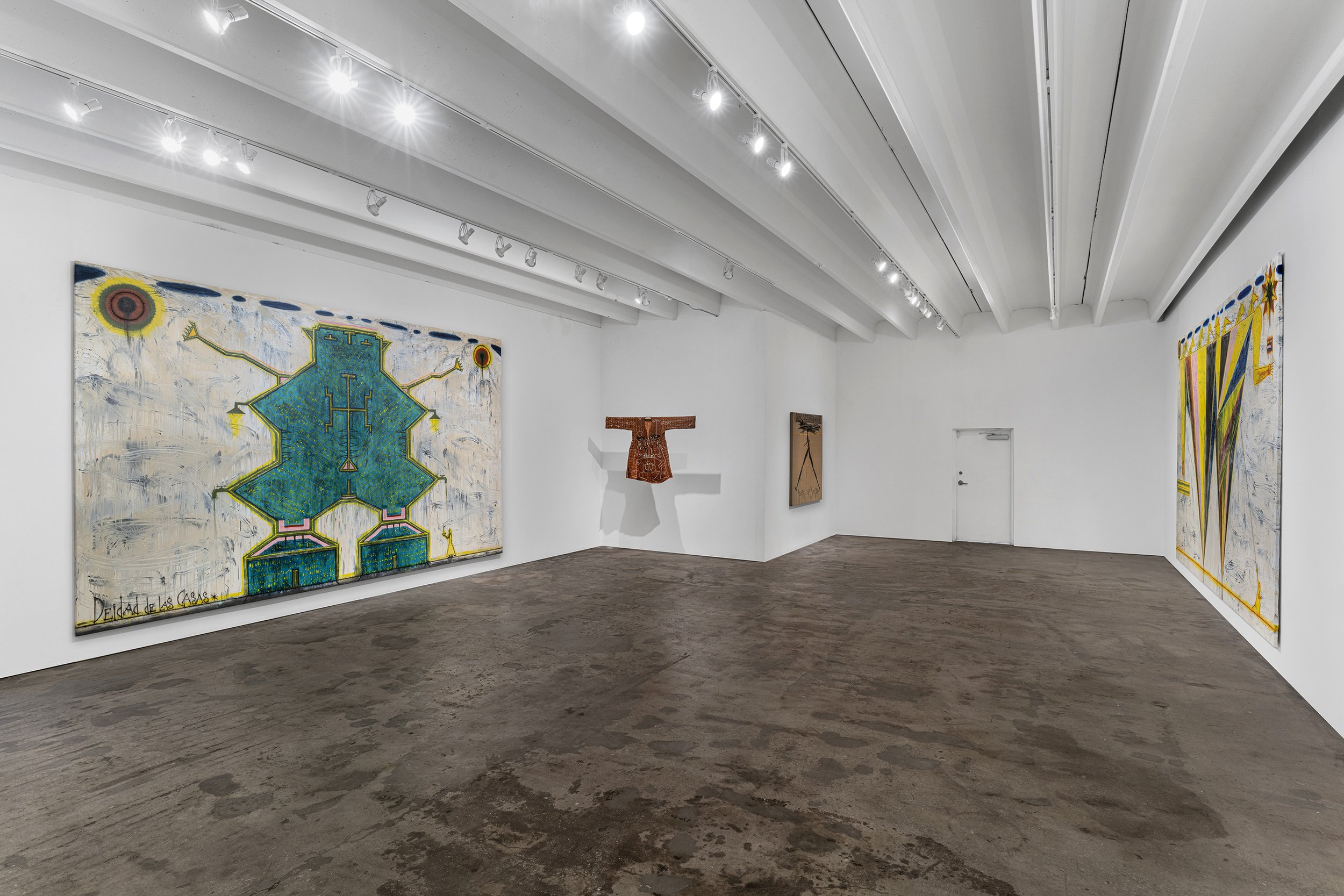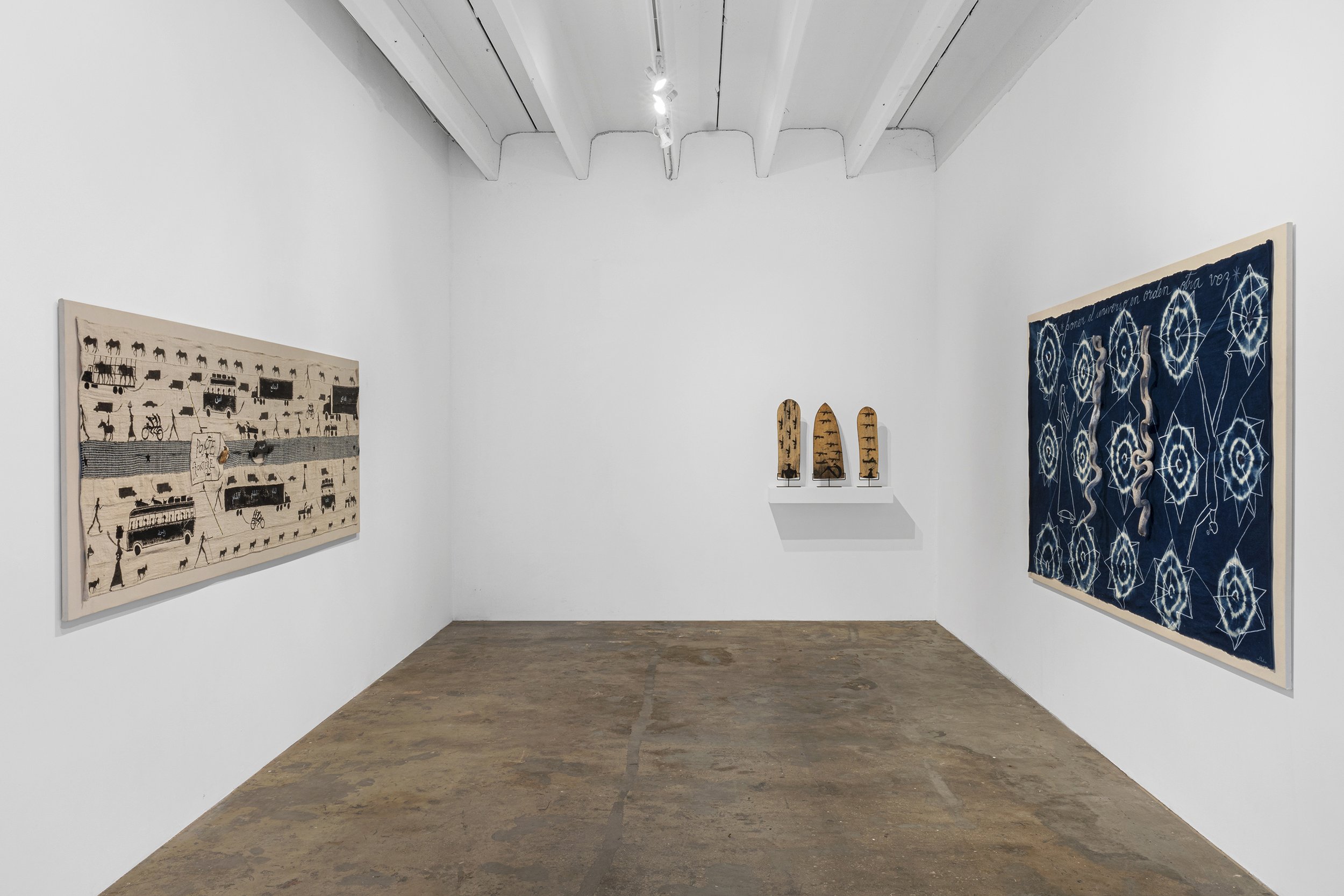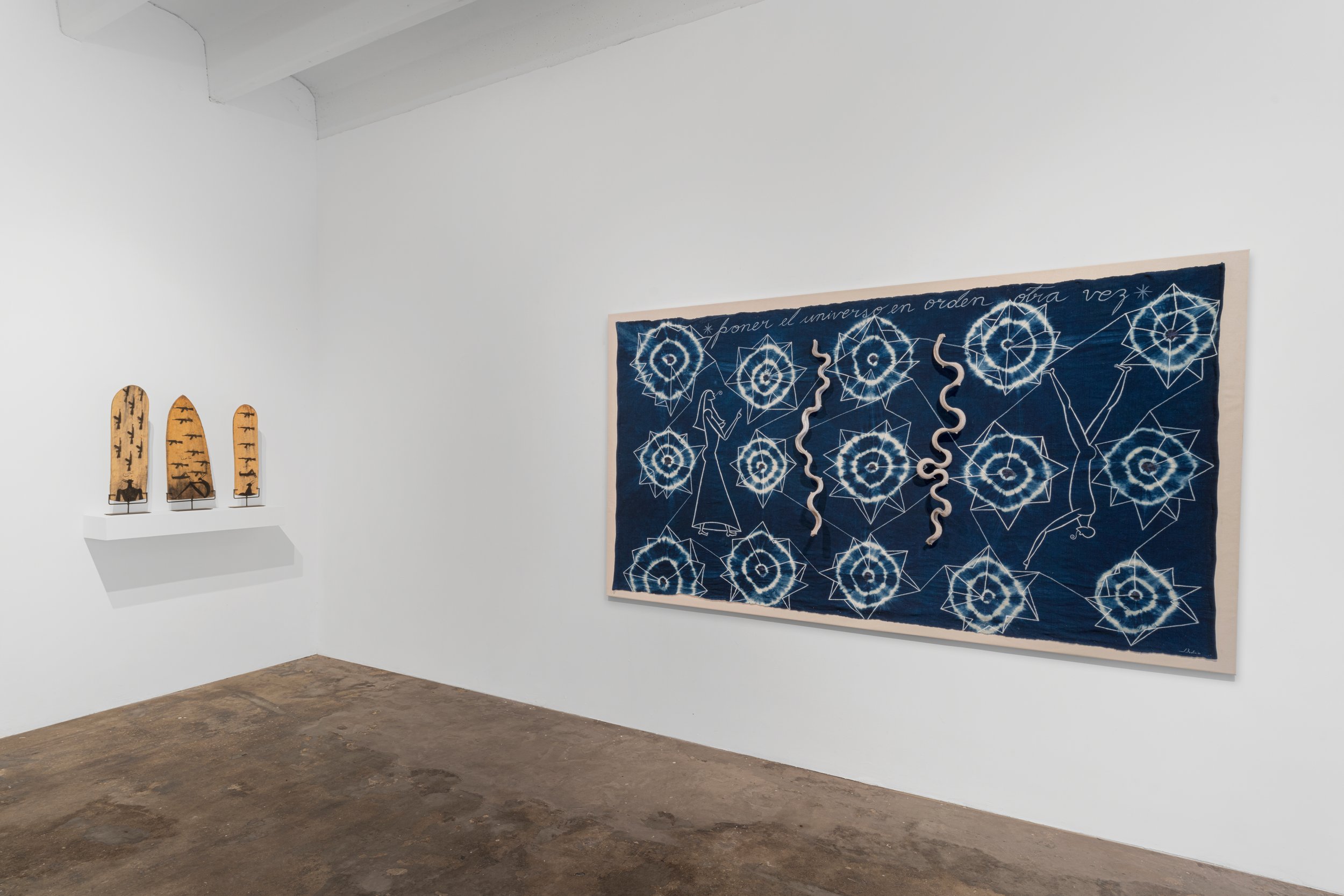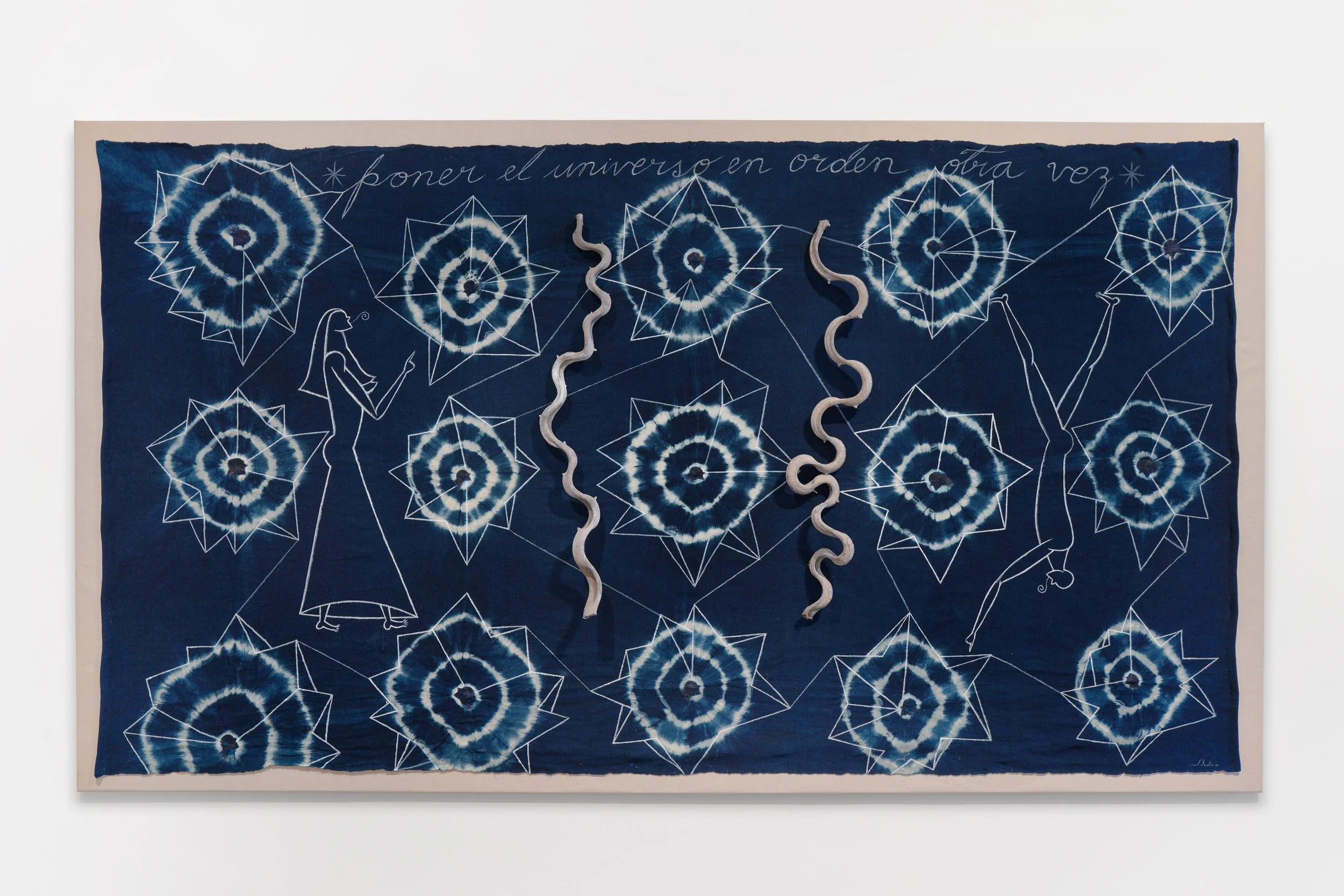José Bedia
Poner el Universo en Orden Otra Vez
February 20 - March 26, 2022
Fredric Snitzer Gallery is pleased to present Poner el Universo en Orden Otra Vez, a solo exhibition of new works by Cuban-born artist José Bedia. Composed of work produced over the last two years, this exhibition recaptures Bedia’s link to artistic traditions of Indigenous cultures and expands upon his most recent trips to West Africa. The exhibition’s title suggests finding “order” within the surrounding chaos of the universe, a starting point for the artist’s overall arching themes between the two presented bodies of work.
The large-scale paintings that dominate the primary gallery are a novel departure for the artist, combining geometric, abstract elements with counteracting, gestural imprints of the artists physical hand sweeping the painting’s surface. Figuration and spiritual iconography remain but are now coupled with new vibrant hues of yellow, pink, turquoise, orange, and blue.
This intentional surface interference continues with a series of medium format textile works. His interest in handmade textiles formed from recent trips to West Africa, in particular visits to Mali and Burkina Faso. Working closely in tandem with a community center in Segu to choose textiles in mid-process, Bedia infuses his own elements within them while maintaining the spirit of the textile. Within this selection are iconic examples of the artists oeuvre and special tributes to the region.
Bedia has studied the ritual art of the world’s tribal cultures in the belief that there is a universal language of cosmos and existence. He is a priest of palo monte, an African religion practiced in Cuba, and has immersed himself in the religion’s history and rituals. The eternal cycle of life and death, the sacred nature of plants and animals, and shamanistic transformation rituals are common themes in his work.
José Bedia was an integral part of the 1981 exhibition, “Volumen Uno” at the Havana International Arts Center, which serves as a milestone in the history for visual arts in Cuba, radically transforming Cuban Art. He participated in the first Havana Biennial in 1984, and later was selected to represent Cuba at the Venice Biennale in 1990. Two years later he was awarded the Guggenheim Fellowship in New York.
Important solo exhibitions include Persistencia del Uso (Persistence of Use) at the National Museum of Fine Arts in Havana, where he obtained the Grand Prize of the Landscape Salon (1984); Magiciens de la Terre, Centre Pompidou (1989);Brevísima Relación de la Destrucción de las Indias (A Brief Account of the Indies’ Destruction) at the Carrillo Gil Museum of Contemporary Art in Mexico DF (1992); De donde vengo (Where I Come From) at the Institute of Contemporary Art, University of Pennsylvania, Philadelphia (1994); Cosas Redondas (Round Things) Fort Lauderdale Art Museum, Fort Lauderdale, Florida (1995); Entre dos Mundos (Between Two Worlds) at the Instituto Valenciano de Arte Moderno (IVAM) in Valencia, Spain (2010); and Transcultural Pilgim at the Fowler Museum in UCLA, California (2012). He also participated in the first four editions of the Havana Biennial, where, in 1986, he won the award for Installation for his work El golpe del tiempo (The Blow of Time). Bedia’s works are part of several collections, including the National Museum of Fine Arts in Havana; the Museum of Modern Art (MoMA) in New York; the Fogg Museum at Harvard University, Cambridge, Massachusetts; the Guggenheim Museum in New York; the Hirshhorn Museum and Sculpture Garden in Washington, DC; the Whitney Museum of American Art in New York; the Philadelphia Museum of Art in Philadelphia, Pennsylvania; the Ludwig Forum für Internationale Kunst in Aachen, Germany; and the Perez Art Museum in Miami, Florida, among others.
